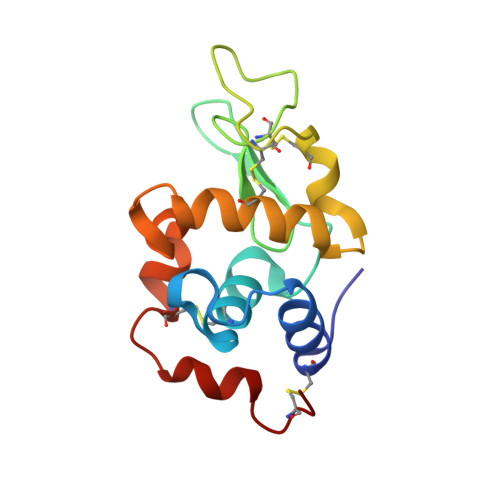Experience with exchange and archiving of raw data: comparison of data from two diffractometers and four software packages on a series of lysozyme crystals.
Tanley, S.W., Schreurs, A.M., Helliwell, J.R., Kroon-Batenburg, L.M.(2013) J Appl Crystallogr 46: 108-119
- PubMed: 23396873
- DOI: https://doi.org/10.1107/S0021889812044172
- Primary Citation of Related Structures:
3TXB, 3TXD, 3TXE, 3TXF, 3TXG, 3TXH, 3TXI, 3TXJ, 3TXK - PubMed Abstract:
The International Union of Crystallography has for many years been advocating archiving of raw data to accompany structural papers. Recently, it initiated the formation of the Diffraction Data Deposition Working Group with the aim of developing standards for the representation of these data. A means of studying this issue is to submit exemplar publications with associated raw data and metadata. A recent study on the effects of dimethyl sulfoxide on the binding of cisplatin and carboplatin to histidine in 11 different lysozyme crystals from two diffractometers led to an investigation of the possible effects of the equipment and X-ray diffraction data processing software on the calculated occupancies and B factors of the bound Pt compounds. 35.3 Gb of data were transferred from Manchester to Utrecht to be processed with EVAL. A systematic comparison shows that the largest differences in the occupancies and B factors of the bound Pt compounds are due to the software, but the equipment also has a noticeable effect. A detailed description of and discussion on the availability of metadata is given. By making these raw diffraction data sets available via a local depository, it is possible for the diffraction community to make their own evaluation as they may wish.
- School of Chemistry, Faculty of Engineering and Physical Sciences, University of Manchester, Brusnwick Street, Manchester M14 9PT, UK.
Organizational Affiliation:



















